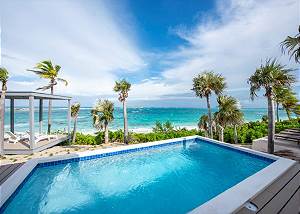Eco Travel FAQ (Advanced): 25+ Practical Questions Answered for 2025
This page tackles the next layer of eco travel—route planning, rail-first tactics, circular packing, reef-safe habits, microfiber control, offset quality, and more. Use the answers, then deepen the how-to in our eco-friendly travel tips, carbon-neutral guide, and zero-waste packing system.
-
What’s the real time–cost win of a train versus a short-haul flight?
For city-center to city-center trips under ~6–7 hours by rail, you often save total time by skipping airport security, transfers, and baggage queues—while dramatically cutting emissions. See the comparisons in Train vs Plane Emissions (2025).
-
Are sleeper trains a smart replacement for evening flights + hotel nights?
Yes. A berth turns transport into lodging, arriving downtown in the morning rested. Compare couchette vs sleeper privacy in How to Book European Sleepers and routes in Night Trains in Europe.
-
How do I evaluate tour operators beyond marketing claims?
Ask for group size caps, wildlife distance rules, local-guide hiring, and clear leave-no-trace policies. Prefer operators with GSTC-recognized standards or transparent impact reports.
-
Can I verify the energy source at my lodging?
Message the host about renewables, heat pumps, smart HVAC, and laundry-on-request. Map their location’s grid mix; proximity to transit also reduces downstream transport emissions.
-
What’s an eco-friendly cold-weather packing plan?
Layer merino/hemp/Tencel base layers, add a compact insulated jacket, and carry a wind-rain shell. Choose low-shed fabrics and air-dry to limit microfibers. See our carry-on capsule.
-
If I must drive, how do I reduce impact?
Choose hybrid/EV where available, batch errands, maintain steady speeds, and fill seats. Park once and walk or ride transit for in-town trips; offset the small remainder transparently.
-
Are e-bikes and bike-share realistic for visitors?
Often yes—look for protected lanes, helmets/lights, and waymarked routes. In hilly cities, e-bikes extend range without taxis.
-
How do I find reliable water refill points?
Mark public fountains, coworking taps, and markets on offline maps. Carry a compact purifier or filter bottle to avoid single-use plastics entirely.
-
What is a circular travel kit—and how do I maintain it?
It’s a reusable, repairable set (bottle + filter, cutlery, container, solids/refills, fabric napkin). Clean and refill regularly; avoid “just-in-case” disposables.
-
Which fabrics perform best with lower impact?
Merino, hemp, Tencel, and organic cotton balance durability, odor control, and easier care. Favor tighter knits to reduce shedding.
-
How do I reduce microfiber pollution while traveling?
Cold-wash, short cycles, air-dry, use a capture bag/filter where possible, and clean rental machine filters after use.
-
What counts as truly reef-safe sun care?
Avoid oxybenzone, octinoxate, and octocrylene; choose mineral formulas (non-nano zinc/titanium), wear rash guards, and follow local marine-park guidance. See our Reef-Safe Guide.
-
What’s ethical photography in sensitive places?
Skip geotagging fragile sites, ask consent for portraits, respect no-drone rules, and follow temple & community protocols.
-
How can I help relieve overtourism pressure?
Travel off-peak, choose adjacent neighborhoods, visit early/late, and spend with smaller local businesses.
-
Which tools help estimate trip emissions?
Use airline/rail calculators and country grid-mix data; then apply the sequence: measure → avoid → reduce → replace → offset. Our carbon-neutral workflow shows each step.
-
What’s the difference between avoidance and removal credits?
Avoidance prevents new emissions (e.g., clean cookstoves); removals draw CO₂ out of the air (e.g., reforestation, durable storage). Reduce first, then purchase high-quality credits and retire them in your name.
-
Can my digital habits lower energy use?
Yes—batch uploads, compress media, use offline maps/docs, and prefer Wi-Fi over cellular where possible.
-
Where do I refill toiletries on longer stays?
Zero-waste shops, “a granel” bulk stores, and markets often carry refills; solids (shampoo, conditioner, deodorant) simplify carry-on rules.
-
How do I prevent food waste while traveling?
Order smaller portions, share plates, store leftovers in a collapsible container, and use a cloth napkin & spork from your kit.
-
Do language basics really change my footprint?
Yes—simple phrases unlock markets, transit, and repairs, steering spending to small local vendors instead of high-waste chains.
-
Are there accessible options that remain eco-friendly?
Choose transit-served lodgings with elevators/ramps, book step-free attractions, and request accessibility details in advance; trains often offer dedicated assistance.
-
What are low-impact diving/snorkeling practices?
Use reef-safe minerals, maintain neutral buoyancy, never touch coral or wildlife, and follow local mooring rules.
-
Rail pass or point-to-point tickets—what’s greener and easier?
Passes simplify regional loops; point-to-point can be cheaper on fixed dates. Either way, trains outperform short-haul flights on emissions and stress.
-
Does coworking beat working from an apartment for energy use?
Often yes—shared HVAC/lighting and central locations reduce extra transport. Pick coworking near metro or tram.
-
Should travel insurance mention rail disruptions?
If your plan hinges on critical connections, choose policies that cover delays/cancellations for trains as well as flights.
-
How do I distinguish a true sanctuary from a roadside zoo?
No breeding for shows, no animal handling, clear welfare standards, expert staff, and transparent finances; reviews by credible NGOs help.
-
Can I build a personal sustainability scorecard for trips?
Yes—track mode choice, distance, nights in transit-served areas, refill rate, food waste avoided, and credits retired. Repeat and improve.
-
When is the best season to lower impact without missing highlights?
Shoulder months reduce crowding and cooling/heating loads, while keeping transit frequent and prices fair.
-
Do compact solar panels and power banks make sense?
They do for off-grid days and sleeper routes; choose efficient panels, right-size your bank, and charge during long daylight legs.
Blueprint for Low-Impact Trips: From Idea to Itinerary
Start with mode choice and base design. First, cluster your destinations around strong rail corridors; then, limit hops by choosing one or two car-free bases. Next, book lodging within a 10–15-minute walk of transit spines, markets, and coworking—because walkability removes daily rides and makes sustainable food choices easier. Afterwards, build a circular kit you can refill anywhere, and finally, measure what remains so you can offset transparently.
Tip: extend stays to reduce legs; night trains bundle transport + lodging for extra savings.
Deep-Dive: Rail-First Planning That Actually Works
Sketch the loop with a map planner, verify exact train numbers and sleeper types on operator sites, and only then compare alternatives. For cross-border routes, add buffer at operator changes; on parallel corridors, compare privacy levels—not just price. If a connection is critical (event, meeting), hold a cancellable morning fast-train or nonstop flight as plan B.
Zero-Waste Gear You’ll Use for Years
Instead of travel minis, rely on solids/refills in a leak-proof pouch; add a stainless bottle with purifier, compact cutlery, and a collapsible container. Pack versatile layers in neutral colors and fabrics that shed less. Maintain your kit weekly so it remains ready for the next segment. Browse our eco travel kit for a practical set that survives real mileage.
Local Economy Playbook
Spend in neighborhood markets and family eateries, hire local guides for nature and heritage sites, and buy durable, repairable souvenirs. When possible, choose apartments with efficient appliances and clear recycling—then ask about laundry on request and quiet hours to support community comfort.
Booking Scripts You Can Copy
“Hi! We’re traveling rail-first and love your location. Could you share details on renewable electricity, smart HVAC, and laundry-on-request? We prefer properties that reduce water/energy use and offer waste sorting. Thank you!”
Still deciding?
Some links are affiliates; we may earn a commission at no extra cost to you.
Why Eco Travel Is the Future: Trends, Benefits & How to Start
The appetite for meaningful, sustainable adventures keeps growing as travelers search for ways to connect deeply with the planet and its people. Eco travel—also known as ecotourism—is no longer a niche; it’s a global movement shaping the future of tourism. Whether you’re planning a long digital-nomad stint in Bali or a weekend trek through the Scottish Highlands, embracing sustainable travel helps protect ecosystems while supporting local cultures.
What Eco Travel Really Means
Eco travel goes far beyond swapping plastic straws for metal ones. At its core, it’s about conscious choices: staying in eco-friendly accommodations, reducing carbon emissions, and directing your spending so local communities thrive. Every decision—from how you pack to where you sleep—can tip the balance toward a healthier planet.
- ✔️ Choose low-impact transport like trains, bikes, or electric car rentals.
- ✔️ Offset unavoidable flights through credible carbon programs.
- ✔️ Support locally owned eco-lodges and community tours.
- ✔️ Prioritize conservation projects and fair-trade experiences.
2025 Green Travel Trends
Sustainability isn’t a passing fad; it’s reshaping how we plan and experience trips. Keep an eye on these rising eco travel trends as you map your next journey:
- Regenerative tourism: travel that actively restores ecosystems and empowers residents.
- Zero-waste itineraries: packing reusables and sourcing compostable gear to leave no trace.
- Carbon-smart routes: airlines and operators now build offsetting into ticket prices.
- Local-first planning: bypassing over-touristed hubs in favor of hidden eco gems.
Practical Ways to Travel Sustainably
You don’t need a perfect plan to make a difference. Small, consistent habits create lasting impact:
- 🔋 Pack solar chargers and energy-efficient electronics.
- 🚉 Opt for trains or buses instead of short flights whenever possible.
- 🥗 Enjoy local, plant-forward meals to cut food-miles and emissions.
- 🏠 Book eco-certified hotels, homestays, or farmstays.
- ♻️ Carry reusables—a water bottle, bamboo utensils, and a sturdy tote.
Destinations Leading the Way
Ready to put your values into action? Consider these stand-out sustainable travel spots:
- Costa Rica: a biodiversity powerhouse powered by renewable energy.
- Slovenia: Europe’s green capital of slow travel and alpine adventures.
- Bhutan: the world’s only carbon-negative nation with deep cultural roots.
- Kenya: community-run safaris supporting wildlife conservation.
- New Zealand: where adrenaline tourism meets strict environmental safeguards.
Deepen the Journey With Helpful Resources
Planning tools can amplify your impact and convenience. Compare routes on Aviasales flights, secure eco-lodging through Hotellook, and stay connected with a global eSIM from Airalo. Each service helps reduce unnecessary detours and supports low-impact travel choices.
Final Thoughts – Greener Journeys Start With You
Eco travel isn’t a single checklist; it’s an evolving mindset. From minimalist packing to choosing a local guide over a mass-market tour, your decisions ripple outward. The next time you plan a getaway, think beyond the postcard view—consider the legacy you leave behind.
“Travel not to escape the world, but to improve it.”
Eco Nomad Gear & Planning Hub: Tools, Packing Lists & Budget Strategies for 2025
Once you’re inspired to travel sustainably, the next step is equipping yourself for the journey. This eco nomad gear and planning guide gathers everything a low-impact traveler needs—from minimalist packing strategies to smart budget tools—so your trip stays light on both carbon and cost.
Smart, Low-Impact Packing
• Zero-waste essentials: stainless water bottle, bamboo cutlery, and solid shampoo bars.
• Solar-powered gadgets: compact solar chargers keep devices running off-grid.
• Eco fabrics: merino wool and organic cotton for long wear and minimal washing.
Budget & Booking Tools for 2025
Use these traveler-trusted resources to save money and cut emissions: Aviasales flights, Hotellook hotels, Airalo eSIM, and GetRentACar EV rentals.
Planning Your Route
Combine rail and ferry travel for dramatic carbon savings. See our train vs. plane emissions guide for real comparisons and route inspiration.
Sample 7-Day Low-Waste Itinerary
Kick off in a car-free city like Copenhagen, hop night trains to Slovenia’s green heart, and finish with a local homestay in the Alps—proof that sustainable digital nomad travel can be exciting and affordable.
Pack less, move slower, connect deeper—the true eco-nomad formula.


